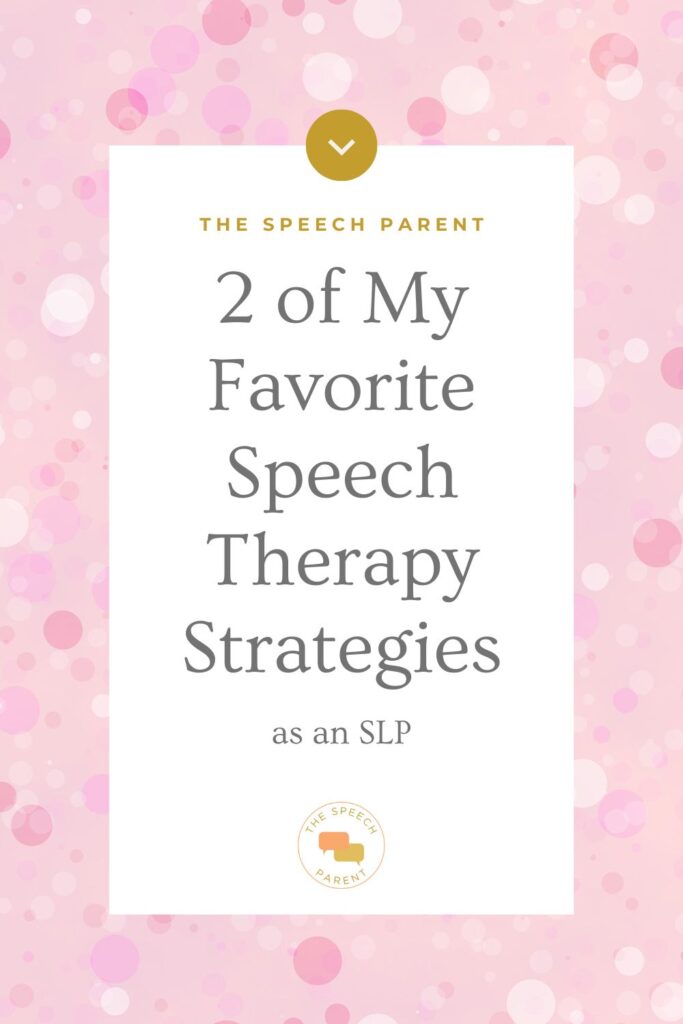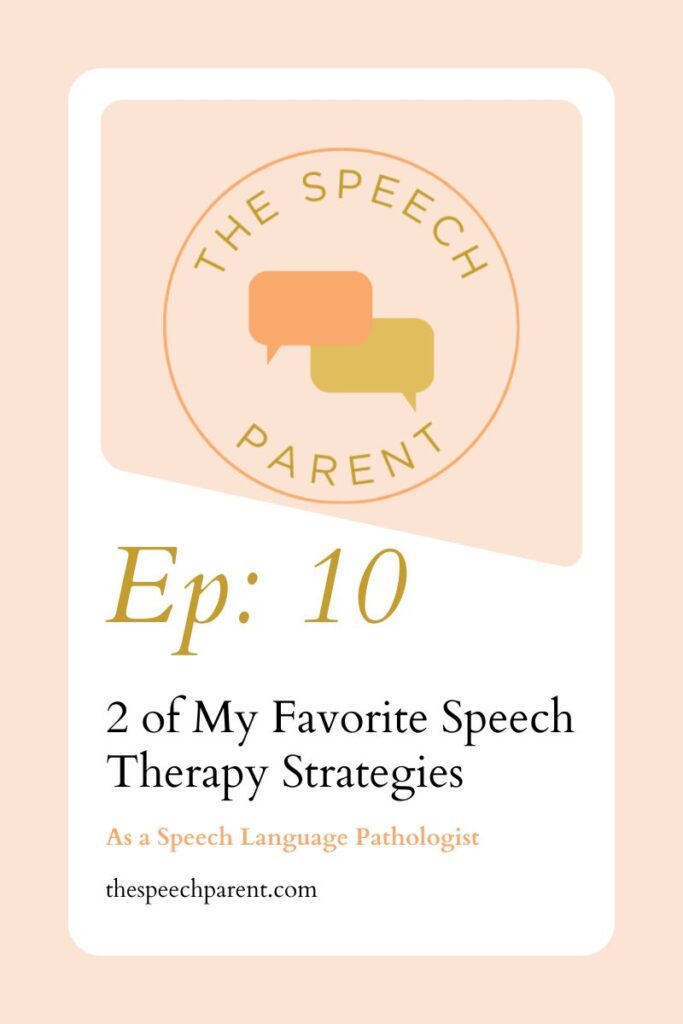Hello hello and welcome back to (reading) another episode of The Speech Parent Podcast. I’m so glad you’re here. I have parents asking me all. The. time. About what they can do with their kids at home to boost their language development, and ultimately, get them talking. So I thought I would share some of my favorite speech therapy strategies with you all today! Unfortunately, there are wayyyy to many of them. So I’m just going to focus on a child who is not speaking yet or is minimally speaking for this episode, and it will just be a part 1. I’ve got lots to share, so let’s get started!
Classic Speech Therapy Strategies
Okay so I feel like I should begin by giving proof to you that my favorite speech therapy strategies are effective. I have worked with hundreds of kids and can say that the particular strategies that I’m sharing with you today in this part 1 episode are like the bread and butter of language therapy. So in the speech therapy world, these are taught in school, modeled by our supervisors, and have a proven track record of success. In fact, once you learn these strategies, I want you to listen to your speech therapist work with your child…and I can guarantee you will hear the therapist use them!
They are powerful, but you are also completely capable of doing it yourself. You may not get to add the complexity to it that a speech therapist would like targeting specific developmentally appropriate concepts or vocabulary, BUT you can do a dang good job of modeling language.
I believe in you. You can do this.
So our first strategy is parallel talk! If I had to sum up this strategy, it would be this: whatever your child is doing, narrate it as if you are a sports commentator.
Parallel Talk
You are going to talk allll about what it is they are paying attention to and doing.
Let me give you an example: “Wow you have a car! That looks like a fast racecar! Vroom…vroom! Oh look the car is flying in the sky. Oh no it crashed! Boom! Oh you’re all done with the racecar. Ah, time for dinosaurs! They’re eating the racecar! Watch out, little racecar!”
That’s Basically a play sequence my son would do
The key to this strategy is that you are providing words or language to what the child is paying attention to. Their eyes are seeing the play happen and their ears are hearing the corresponding language.
I’m telling you, this strategy is SO GOOD! Truly the #1 speech therapy strategy, we just get even more particular about what it is we’re modeling.
Now, generally speaking, We want to model language naturally. That’s how kids learn language. So modeling language in their natural play is golden!
This means don’t talk about abstract things or things they aren’t looking at. If my child is paying attention to the ceiling fan spinning or looking out the window, it’s not going to be helpful to talk about what is happening in the book that we’re supposed to be reading together. Instead, what I say would directly correspond to where my child’s attention is.

If he’s looking out the window, then I’m talking about what we see out the window. If he’s playing with trains, then I’m going to talk about the trains and what all is happening as he plays with them. So you will truly be like an announcer/commentator and describe the play-by-play action! Honestly, your kid may love it! They will feel like you are really paying attention to them and stepping into their world!
This is such an important strategy to master, so I really encourage you to keep practicing it every day. I think it’s easiest (and most powerful) in play, but really you can do it all through your morning or bedtime routine or all throughout your day. But realistically, your child is going to get annoyed (and you’re going to get burned out) if you talk all the time. I recommend sprinkling it in for a little bit each day and as you get into the habit of it, it will become easier and easier!
Back to the second of my favorite speech therapy strategies as it goes right along with this one!
Strategy #2 – SELF TALK. This is when we narrate what WE are doing, which is different from parallel talk that we just mentioned where you narrate what THE CHILD is doing.
Self-Talk
So the self talk strategy feels the most natural when our child is a baby and we like to “talk to ourselves” as we ramble on about what we’re doing while we change their diaper or cook dinner.
But you can still do this with a toddler or preschool child!
Simply narrate what you’re doing – so long as they are paying attention to you!
Example: “Okay, it’s time to go get the mail! Let’s walk to the mailbox! We’re walking, we’re walking, we’re walking to the mailbox! We made it! Okay, I’m going to open the mailbox….open….wow! Look, I see mail inside! Let’s take it out! Out! Out! Yay! We have letters! Let’s count them. 1, 2,…”
Just like in the last strategy (parallel talk) we’re giving language to what they are paying attention to. The nice thing about this one as opposed to parallel talk, is that you get to be in charge of the actions so therefore you’re in charge of what vocabulary gets to be modeled. The tricky part is keeping the child’s attention!
Basically to sum it all up, narrate what your child is paying attention to. Give them words to what they are seeing and experiencing. It seems simple, but I promise you that it is so powerful! So much more powerful than using flashcards or asking a bunch of questions. It’s hands-on, it’s natural, and the best part is that (since you got the knowledge for free) it’s free!
If you don’t want to wait a week for more strategies, or maybe you want reminders of the strategies so that you can keep up the habit – it’s not too late to join the 5 day late talker challenge! You can go to thespeechparent.com/latetalkerchallenge
It would also mean the world to me if you would share this blog post about my favorite speech therapy strategies with a friend who you know is worried about their child and looking for ways to help them at home. And if you haven’t yet, check out my blog post about whether your child is a late talker.
I can’t wait to share more strategies with you in next week’s blog post. Thanks for joining me. And remember, the best is yet to come!
